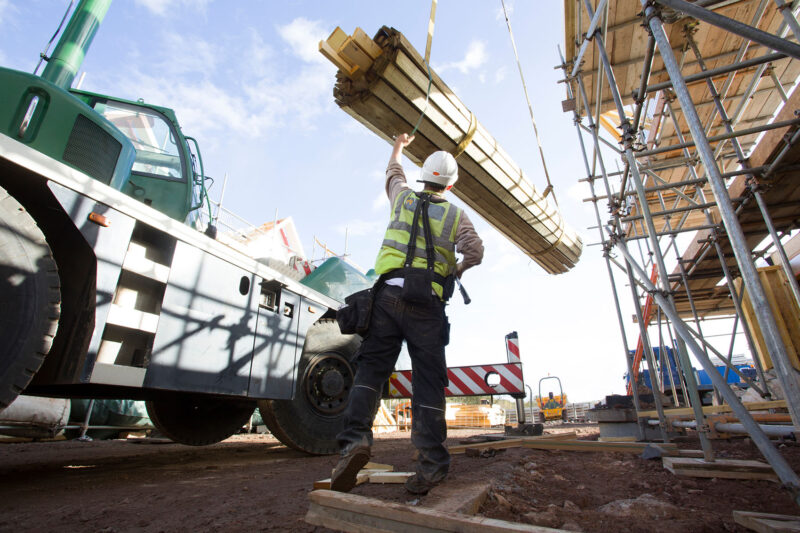Are you looking for a comprehensive guide to BuildOps Commercial Construction Glossary? Look no further! This beginner’s guide is here to help. It covers all the basics of commercial construction, from key terminology and definitions to tips and tricks that will make any project go smoother.
With this handy resource, you’ll be able to quickly get up-to-speed on the industry so that when it comes time for your next big build, you’ll have all the information at your fingertips. So dive in today and start learning about BuildOps Commercial Construction Glossary!
Commonly Used Acronyms and Abbreviations in BuildOps Construction Industry
The BuildOps Construction industry has its own set of acronyms and abbreviations that are used to describe the many different components of a commercial construction project. To help you understand what is being referred to in conversations, we have compiled a list of commonly used acronyms and abbreviations used in the BuildOps Construction Industry. Some examples include BIM (Building Information Modeling), CAD (Computer Aided Design), PPE (Personal Protective Equipment), and RFIs (Requests for Information).
Each abbreviation or acronym stands for something specific within the context of construction projects which makes it easier for everyone involved to communicate about the project more effectively. Other terms you may come across during your building journey include GC (General Contractor), MEPF (Mechanical Electrical Plumbing Fire Protection), and OSHA (Occupational Safety & Health Administration).
Additionally, when discussing timelines with contractors you may hear them refer to EODD or End Of Day Deadline meaning they will complete their task by end of the day. To stay up-to-date on all these various acronyms and abbreviations, make sure you familiarize yourself with this guide so that when it comes time to present your project plans with confidence, there are no misunderstandings due to a lack of knowledge about any related terminology.
Essential Definitions of Key Terminology in the BuildOps Commercial Construction Process

When it comes to commercial construction, there are a few key terms that you should know before beginning any project. A BuildOps Commercial Construction Glossary is an essential tool for understanding the terminology related to this complex process. Here are some of the most important definitions of keywords and phrases you’ll need to be familiar with Project Management – Project management involves overseeing the planning, design, and execution phases of a construction project.
This includes budgeting, scheduling resources, monitoring progress, and ensuring quality control throughout the entire process. Contractors – Contractors are companies or individuals hired by owners/developers to carry out specific tasks associated with a building project such as demolition, carpentry, or electrical wiring work. The contractor is responsible for completing their portion of the project by agreed-upon deadlines and budgets outlined in their contract agreement.
Design-Build – Design-build is an integrated approach where one entity (a design-build firm) designs and constructs all components of a building under one contract agreement between them and the owner/developer rather than having separate contracts for each service provider involved in constructing the building from start to finish. Bidding Process – The bidding process is used when selecting contractors who will complete certain parts of a construction project on behalf of an owner/developer. It usually involves submitting competitive bids which outline cost estimates along with proposed timelines for completion that meet all specifications outlined by the owner before awarding contracts based on the lowest prices offered by bidders who have met other requirements such as experience level or references from past projects completed successfully within agreed upon timeframe limits etc.
Important Guidelines for Building Regulations, Structures, and Design Considerations
When it comes to building a commercial structure, there are several important guidelines to consider. Regulations and codes must be followed to ensure the safety and integrity of the construction project. Additionally, sound engineering principles should be applied when designing any given structure. In terms of regulations, all parties involved with a construction project must be aware of local laws, as well as any national or international standards that apply.
This includes zoning laws regarding designated areas for commercial use; fire codes; and structural code requirements such as foundation design specifications or load-bearing capacity calculations. The responsible party must also adhere to labor regulations about working hours and conditions for employees on-site during construction activities. Structures themselves must also meet certain criteria to withstand environmental forces like wind loads or seismic activity without failure over time.
For example, steel support beams may need more reinforcement than wood supports due to their lower tensile strength under high-pressure loads from earthquakes or storms. Similarly, concrete foundations require careful consideration when determining the grade level upon which they will rest so as not to become submerged by seasonal rainwater flooding events resulting in potential structural damage due to water saturation of soils beneath them over time.
Design considerations should also include aesthetics such as blending colors into surrounding landscape features while keeping external lighting fixtures low enough not to disturb neighbors after dark—all factors being necessary components when constructing a successful buildup commercial property within an existing community environment where both form and function can coexist harmoniously together with minimal disruption or discomfort towards residents living nearby at all times throughout its life cycle
Tips for Navigating the Complexities of the BuildOps Commercial Construction World

Navigating the complexities of commercial construction can be daunting, especially when it comes to understanding industry terms and jargon. To help beginners understand this world better, there’s no better place to start than with a comprehensive guide on BuildOps Commercial Construction Glossary. Here are some tips for making the most of this resource:
- Start by reading up on key concepts – Before diving into more specific terminology, take some time to familiarize yourself with core concepts such as project management, cost estimation, and scheduling. This will provide you with an essential foundation for understanding how different terms relate to one another in the context of commercial construction projects.
- Break down complex phrases – Many words or acronyms used in the glossary may appear intimidating at first glance; however, these phrases often have simpler meanings once broken down into individual components or parts of speech. For example, the cost-plus contract is composed of two separate words – ‘cost’ which refers to money spent, and ‘plus’ which indicates that something else is included – so it essentially describes a type of agreement where extra costs are factored in beyond what was initially agreed upon during negotiations between parties involved in a project.
- Familiarize yourself with relevant regulations – It’s important to be aware of any applicable laws or regulations related to your chosen field before getting too deep into learning specific terminology associated with the BuildOps Commercial Construction Glossary; otherwise, you risk missing out on crucial information that could impact your understanding later on down the line!
- Exercise patience – Learning about new topics always takes time; don’t expect instant success when tackling unfamiliar territory like commercial construction vocabulary! Take things slowly by focusing firstly on mastering basic terms before progressing onto more intricate aspects such as legal considerations and financial implications associated with certain definitions contained within the glossary itself


